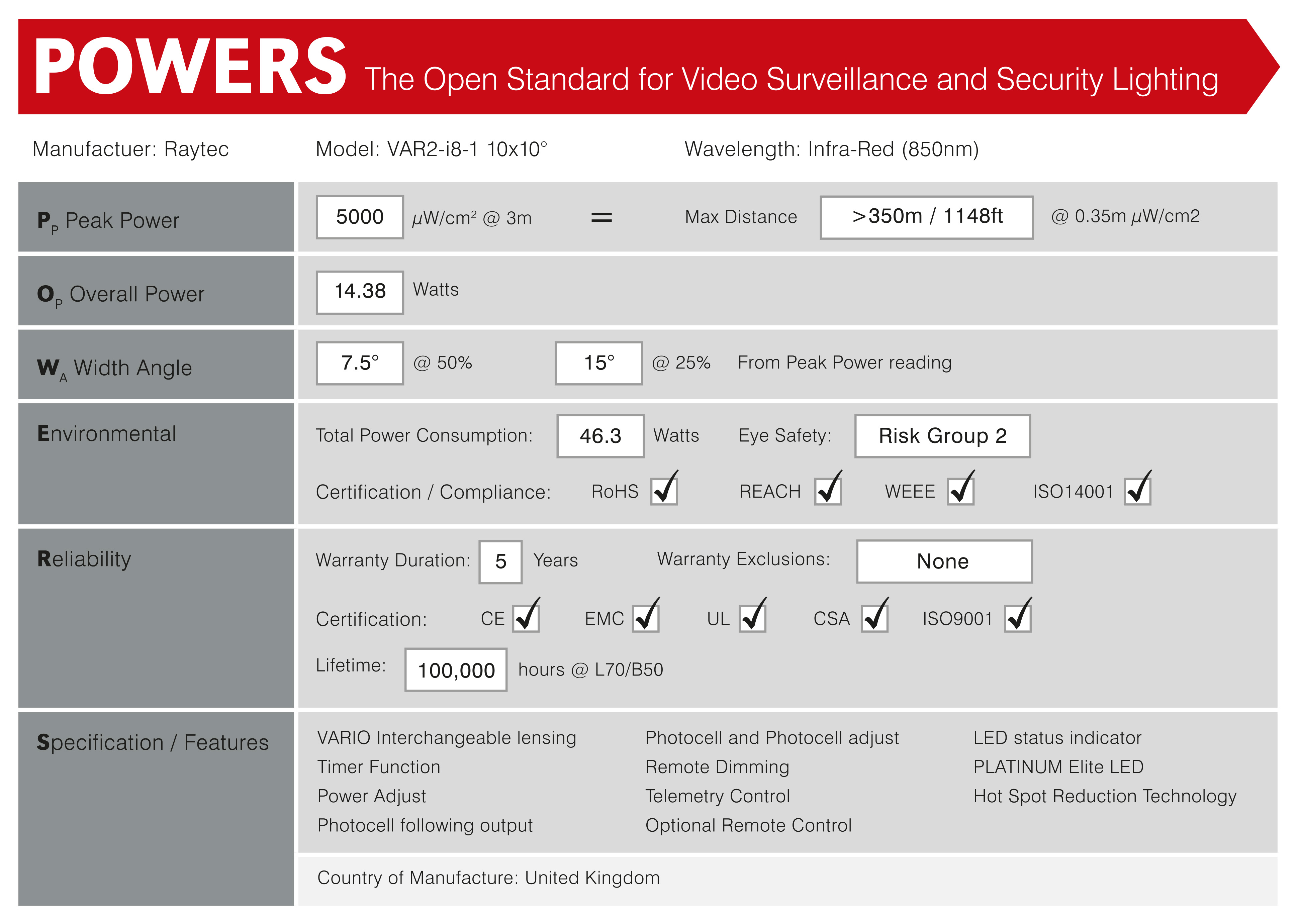Illumination plays a key role in security applications to guarantee high quality images, even under challenging light conditions.
Illumination plays a key role in security applications to guarantee high quality images, even under challenging light conditions. The latest advances in camera technology are changing the way installers are designing lighting for intelligent video surveillance systems.
The following article is part 2 on exploring the reasons for the trends in LED lighting, and an emerging fourth trend – improved data for specifiers.
3: Reduced cost of illumination
Low light, not no light
There is little doubt that cameras are getting better in low light conditions. All of the major camera manufacturers now have low-light models that are highly sensitive to light. These cameras are designed to maximize any available light on scene to produce images at night. But remember, these are low-light cameras, not no-light cameras. All cameras need light to see, whether that’s in the security industry, photographic industry, televisual industry or integrated into your smart phone. Good lighting and a noise-free image will also lower your bandwidth and storage, while maintaining a higher frame rate for accurate real-time video.
While all cameras need good lighting to see at night, the big advantage of low-light cameras is that they produce great results with significantly less light. This means, that when you use a professional low-light camera you can use a smaller LED illuminator to deliver the same distances that you would achieve with a more basic camera and a larger illuminator. Effectively, using a low-light camera lets you reduce the cost of your supplementary lighting.
What you should never do is use a low-light camera without any professional surveillance lighting. Why pay extra for a high performance camera and then limit its performance by not providing illumination for it? Even the best cameras will still produce noisy images in darkness that will seriously impact the performance of video analytics and create false alarms. No light equals no video analytics.
Raytec continually test our lighting with a wide range of world leading cameras. When we carefully align the latest high power LED lighting with a high performance low-light camera, the results are outstanding. Our recommendation to get the best pictures and performance at night would always be to choose a high performance camera and support it with a small amount of professional LED lighting.
More light for your money!
Over time technology improves, and the cost of that technology comes down. We can certainly see this with surveillance cameras where there has been some price erosion. This means that lighting manufacturers must also respond with lower cost solutions. If the cost of a video surveillance camera falls, then it follows that the price of lighting must also fall to support that camera.
LED lighting is a global growth technology attracting lots of investment. Consequently, the performance of LEDs is constantly improving and developing. Modern illuminators that are purpose-designed for video surveillance and use the latest optics and LEDs, can deliver over 200 percent more lighting power than illuminators that are only 3 to 4 years old. As an example, Raytec’s latest range of VARIO 2 illuminators utilizes PLATINUM Elite SMT LED technology to deliver up to 236 percent more power than its predecessor VARIO(1).
Modern illuminators deliver more light output for your money, or “more meters of illumination per $.” This often means that you can utilize a smaller illuminator than was previously possible, making your installation more cost-effective.
4: Improving information and data for specifiers
Taking the guess work out of surveillance lighting
 "POWERS" is the industry's first published video surveillance
"POWERS" is the industry's first published video surveillance
lighting standard for specifying and comparing illuminators.
Let me share a secret with you. The datasheet of an infra-red or white-light illuminator has never been able to precisely tell you how well a light will perform. Is one manufacturer’s 100m illuminator exactly the same as another manufacturer’s 100m illuminator? How do they calculate their maximum distance? As a lighting professional it is impossible to rate products from a datasheet, so specifiers have always been in an impossible situation.
Essentially, the security industry, as we know it, has long been absent of any accepted surveillance lighting standards; each manufacturer has always established their own performance criteria. After helping our customers face this challenge for the last 25 years, Raytec have tackled this head on by publishing the industry’s first lighting for surveillance standard — “POWERS.” POWERS is an open standard available for all manufacturers to adopt.
As part of the POWERS standard, Raytec provides standardized and scientifically tested lighting data to support our performance claims —especially distance. The POWERS standard defines the amount of light needed at the maximum quoted distance; 0.35μW/cm2 for IR and 3 lux for white-light.
The POWERS data is designed to help all security professionals to more easily specify and reliably compare the performance of different illuminators. It also provides an understanding as to how a chosen lighting product will perform.
Based on decades of experience, POWERS data is available for all of Raytec’s VARIO2 illuminators. It allows security professionals to specify with confidence, and provides reliable and consistent information on which to base their choices.